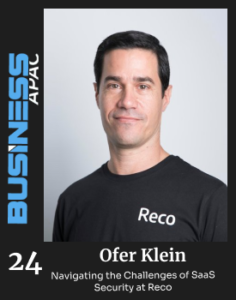In the last years, the HR arena has witnessed a massive transformation. The rise in the job openings along with employees having access to information about employers are some of the aftermaths of this transformation. Thanks to the internet, candidates can now research various aspects of the company such as ratings from former and current employees’ comments, company culture, benefits packages, and other crucial aspects before applying. Naturally, this wealth of knowledge coupled with a surplus of job openings makes job seekers fussy and indecisive about their choice. As a result, it is no longer suffice to post jobs and hope for the right candidates to apply.
Today, recruiters need to be proactive, creative, deliberate, and coordinated to attract and cultivate skilled and enthusiastic applicants. That is to say, they have to think like advertisers and marketers. This is where the concept of ‘recruitment marketing’ comes into the picture. Recruitment marketing is not just a fad, but a completely new style of pulling qualified applicants in with creative messaging, personalization, and targeting. It is the process of promoting the employer’s brand with the use of marketing methodologies throughout the recruitment life cycle to attract, engage, and nurture relationships with qualified talent. Its key objective is to drive individuals to apply to the open positions companies have available.
Need of the Hour
According to the Bureau of Labor Statistics, 7.1 million openings were available in February 2019, but only 5.7 million hires were made. This showcases that there will be an upsurge in job openings and candidates seeking employment will be attracted to big brand’s names. This new concept of recruitment is further divided into four segments: increase awareness, generate interest, nurture the decision, and drive action. These four segments assist the recruiter to attract new candidates and retain the employees. It may happen that job seekers decided not to apply due to various reasons. Then, a recruiter should look for other options such as increasing the candidate pool so that they can tap into it when there are positions open up.
Fundamentals Elements
Recruitment marketing’s key elements mostly come from traditional marketing which includes employer brand, employee value proposition, candidate personas, competitor analysis, and candidate experience. These elements are kept as core points for developing any strategies.
Tips for Developing Strategies for 2020
There are many parameters need to be checked before developing the recruitment marketing plan. Once these parameters are fulfilled, then companies can start creating their plan with the following six tips:
Build a solid brand
To stand out from their market competitors, businesses need to make their brand recognizable and memorable. According to the Linkedin article, 75% of job seekers research an organization’s reputation before applying for a job. That’s why it is crucial to be consistent in the employer brand messaging.
Define Roles
Defining roles prior to hiring will refine the strategy as well as help in creating those ever-frustrating job descriptions. It is crucial that everyone involved in the hiring process is in agreement upon the finalized role because they will affect candidates’ experience with the company as a prospective employer. Specific criteria help applicants assess their qualification level and understand the requirements for the position before applying, thus saving time for recruiters to work through applications and candidates to apply for jobs for which they are actually qualified.
Locate Target Candidates
The next step after defining the roles is about considered the ideal candidate persona the company needs to fill the role and add to its team dynamic. In the application process, the entire recruiting committee and team members who will work directly with the applicant should be consulted on who is their ideal candidate and what qualities to look for.
Use Available Resources
Irrespective of size and experience, recruiters have limited resources, especially when it comes to recruitment marketing campaigns. In this, the marketing team can provide some insight into where their marketing efforts are successful, whether they can be paid or organic and if they utilized more in-house or out-of-house resources.
Enhance Candidate Experience
To attract talented candidates, organizations need to focus on making the candidate experience better. If any job seeker has a negative experience, then she/he might do bad publicity resulting in greater financial losses. Therefore, organizations should take a candidate experience lightly.
Increase the visibility of the website
Organizations use various tools and technologies to make their presence in the online world better. However, it is not enough to attract relevant traffic, generate leads, and ultimately, convert them into applicants. Therefore, they should focus on making their brand better than their rivals make. By using SEO, they can reach wider audiences to create a pool of candidates.
Use social recruiting tactic
According to smart insights, there are almost 3.5 billion active social media users worldwide. Moreover, the LinkedIn survey says that 49% of professionals are following relevant organizations on social networks to keep pace with their recruitment processes. This shows that social media is emerging as a tool for recruiters to search for good candidates.
Create an employee referral program
Many companies started using ‘employee referral programs’ to attract more candidates. Through this program, organizations can have multiple benefits for your hiring process, including lower turnover rates, spending less time in the recruiting process and onboarding, and minimizing cost per hire. For example, Intel provides referral bonuses to their employees. Moreover, when an employee recommends women or minorities, their bonus doubles. Salesforce hosts so-called Recruitment Happy Hours, meetings where their staff members can invite people they want to refer.
Recruiter as a Pioneer
For the year 2020, the smart recruiter needs to be a pioneer in the transition to move from manual-mechanical recruiting practices to smart-predictive recruitment approaches that have company goals and objectives in mind.
References:

















